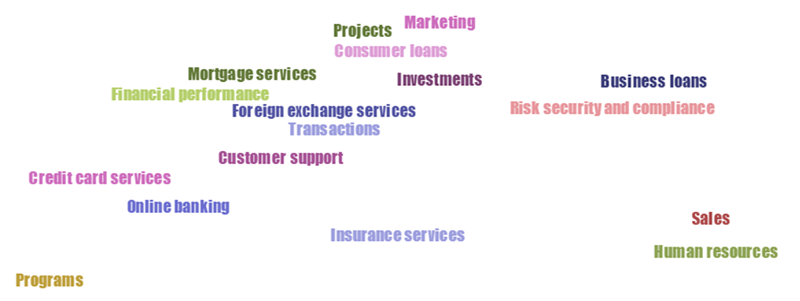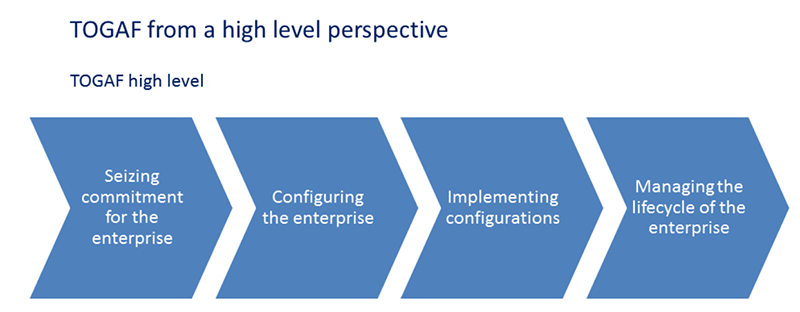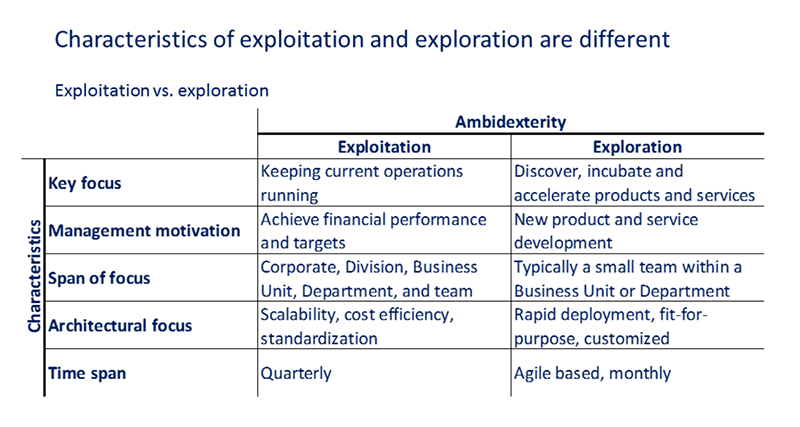Do you recognize the continuous balancing of urgent vs. important matters? I am often confronted with urgent matters that need to be resolved quickly such as an escalation within a project, deadlines and engaging in interactions through meetings, e-mails, phone calls and a dozen other channels. On the other hand, I am also often confronted with important matters that are not urgent such as developing my professional skills and working on relationships. Sound familiar? I bet it does. It is perfectly normal to prioritize between urgent and important matters and everybody does it. Organizations face many similar challenges of which one is ambidexterity.
Every organization is confronted with ambidexterity. Ambidexterity is about achieving a healthy balance between the management of operations, daily work, exploitation vs. the management of innovation, discovering, incubating and accelerating new products and services, exploration. Ambidexterity within organizations means “exploiting the present and exploring the future”.
Consider financial services providers, for example consumer banks. As illustrated in the figure below, the daily operations of a consumer bank involves activities such as – and certainly not limited to – the management of:

In order to achieve competitive advantage, a consumer bank needs to perform current operations (exploit) while new services and products need to be developed (explore). Both activities – exploitation and exploration – need to be performed and aligned.
It is not a matter of one way or the other. If you only focus on exploitation, your organization will eventually not be able to provide desired products and services for its customers. As a result customers will turn to other organizations who are able to satisfy their needs. Of course such shifts in markets, consumer preferences and new players do not occur overnight. However, given the constantly accelerating pace of technological developments, markets change rapidly. Not overnight but often within months. Then suddenly new competitors appear on the horizon. Not convinced? Consider the development of mobile payments. Companies that are fundamentally different from consumer banks, such as Google and Apple, explore mobile payment services, as highlighted in an earlier blog. Alongside exploitation, exploration is therefore essential for the competitive advantage of a consumer bank.
On the other hand, focusing solely on exploration does not pay the bills. Assigning the highest priority and resources to the discovery and development of new products and services is not realistic. You need a constant cash flow through exploitation to fund exploration. Furthermore exploration is tightly related to investments. Investments in a variety of resources to explore new products and services. In fact, investment decisions also need to allocate resources for exploitation and exploration. A common practice for this is Enterprise Portfolio Management. In addition, a consumer bank – just like any organization – needs to project returns on investments. So exploration should at some point in time be followed up by exploitation. The two are related. Exploitation is required to generate cash flows and to fund exploration.
In order to exploit the current state and explore the future, a consumer bank needs to understand ambidexterity and the related organizational configurations. Enterprise architecture can be used for organizational configurations. Within a consumer bank, enterprise architecture aligns business processes, information systems and the technological infrastructure. Given the complexity of Business-IT alignment, a methodology to apply enterprise architecture would be valuable. TOGAF is one such methodology.
TOGAF is an Architecture Development Method (ADM), the process that facilitates the support of organizational developments through enterprise architecture. TOGAF consists of ten phases with specific inputs, activities and deliverables. More on applying TOGAF can be found here. As illustrated below TOGAF is about:

How can TOGAF be used to manage and align exploitation and exploration within a consumer bank? First of all we need to take into account the different characteristics of ambidexterity – exploitation vs. exploration – as illustrated below.

So how do you apply TOGAF to facilitate and align exploitation and exploration? The answer is to do this in parallel, with a specific focus in each ADM phase. In the following illustration the focus of ADM phases for exploitation and exploration is highlighted.
